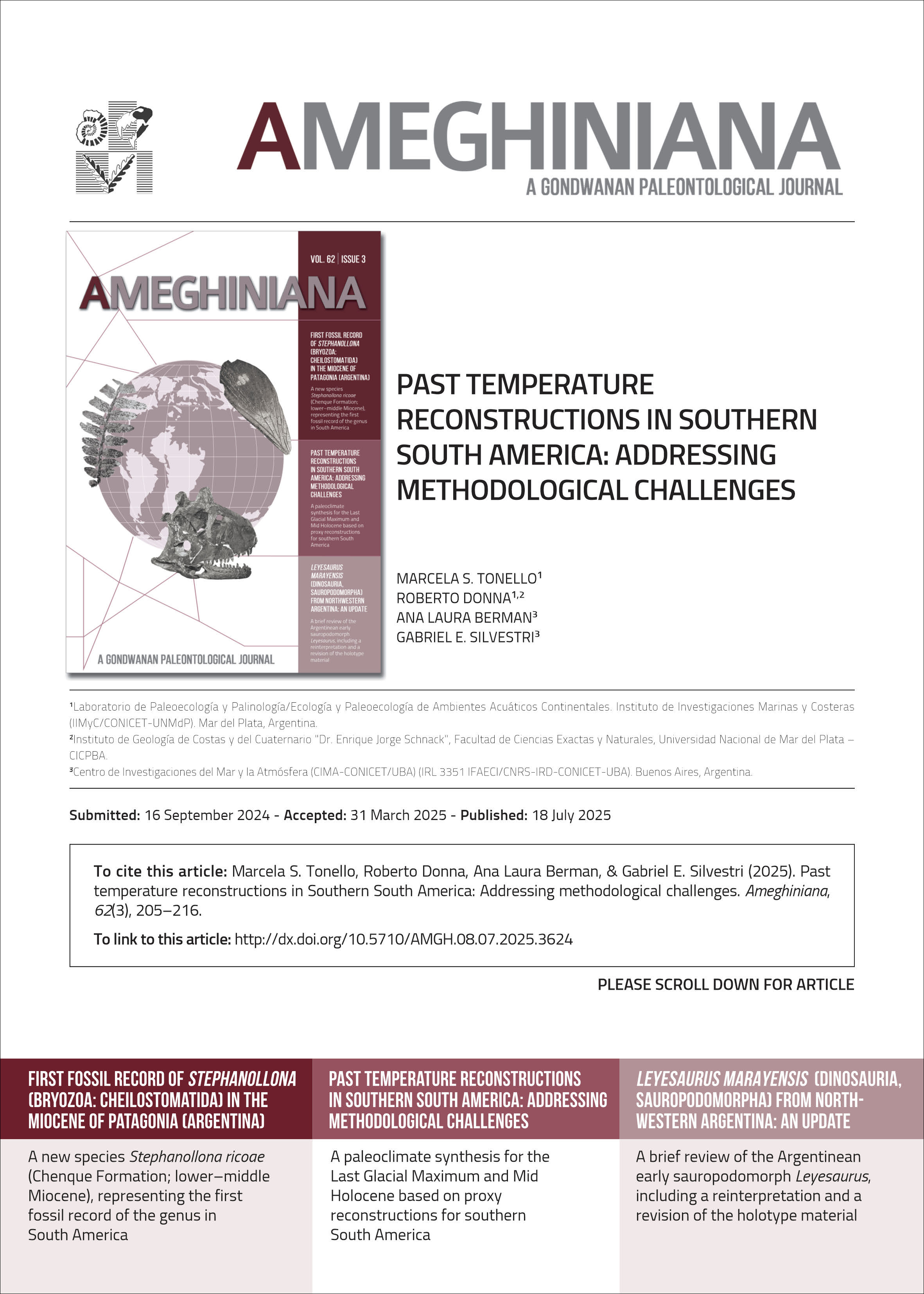PAST TEMPERATURE RECONSTRUCTIONS IN SOUTHERN SOUTH AMERICA: ADDRESSING METHODOLOGICAL CHALLENGES
DOI:
https://doi.org/10.5710/AMGH.08.07.2025.3624Keywords:
Climate proxies, Paleotemperature, Paleoclimate, Southern South AmericaAbstract
In this study, we developed a georeferenced database of paleotemperature proxy records for southern South America, focusing on
two key periods: the Last Glacial Maximum and the Mid Holocene. The database is aimed at synthesizing the current knowledge, assessing the reliability of past climate reconstructions, and highlighting the challenges in climate synthesis in the region. The studies selected for the database, published between 1990 and 2023, produced paleotemperature estimations (annual or seasonal) using biological, geochemical, and physical proxies, as well as archaeological records; had chronological control and referenced the paleotemperature estimation to the present climate or other well-known time window. Thirty-three reconstructions were selected, twenty corresponding to the Last Glacial Maximum time-window and thirteen to the Mid Holocene. The spatial distribution of sites was markedly inhomogeneous, with a high density around the Andes at ~40°S, while broad areas lacked proxy information. The compilation indicates a colder climate during the Last Glacial Maximum compared to the present, with a regional warming trend. In contrast, the mid-Holocene compilation suggests subtle warmer conditions overall, although sites in the Andes belt and central Argentina indicated cooler conditions. This study underscores the heterogeneous local responses to global climate forcings across the large and geographically diverse region of South America and summarizes the challenges in synthesizing climate proxy information. In light of these findings, we recommend that future climate reconstructions be designed considering spatial and temporal gaps and that they provide clear reconstructions referenced to present climate conditions.

Downloads
Published
Issue
Section
License
Authors publishing in Ameghiniana have the option of making their article freely available online. Authors opting for the Open Access must pay a fee of $300 (US dollars) to cover article-processing costs and to ensure the article is made open access. Please contact the Production Team after the acceptance of your manuscript if you are interested in making your article Open Access. This option implies by default a license Creative Commons Attribution Non-Commercial-NoDerivs License (CC BY NC ND). If your funding institution requires a different licensing option please communicate this to the Production Team after the acceptance of your manusctipt.










